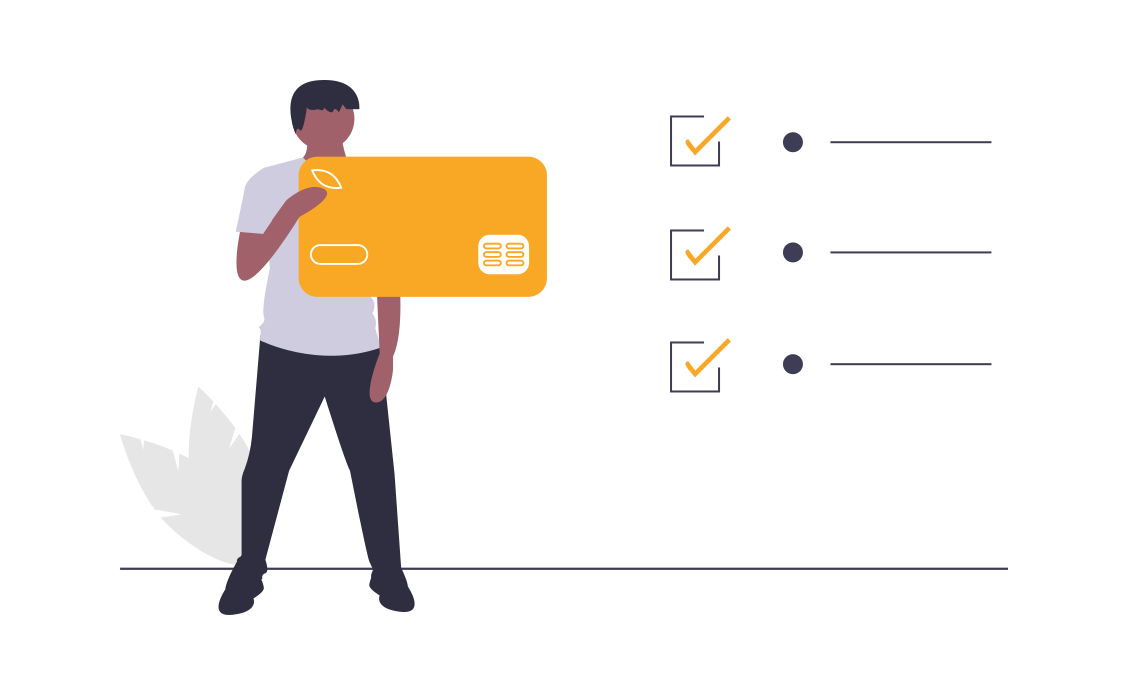In 2020, we were happy to have talked to 94 (!) remote tool companies about what they are up to. With more than a dozen we talked a little closer and many of them we've shown you. However, amongst the sea of amazing new innovations in the remote work space, we still found gaps.
Struggles we've heard from remote teams that don't have a solution yet. Solutions that are missing that little something to make them amazing. These are our wishes for the next year.
Operations
Running an internationally distributed team has a lot of challenges to overcome, but the most rigid of them all are international regulations and specializations when it comes to running a multi-national organization.
The operations side of remote work is usually deemed pretty unsexy. It's all about working with regulators, shaking hands and most likely an expensive journey to expand in a lot of countries. Hard work, but one that wouldn't go unappreciated.
1. Better payment gateways for remote teams
For how far we've come with remote work, we really haven't made a ton of strides with cross-continental payments. In my first-ever remote job, I used to get paid from a regular US corporate bank account directly to my swiss bank account. Payments got routed wrongly here and there, the fees were sky-high and the payments often took a week to get to me.
Since then, we've made a stride or two. With something like TransferWise, you can make the whole process a little bit speedier and cheaper. Transfers now only take 1-2 working days and are fairly transparent. Even better: Fees and availability aren't confined to one nation, TransferWise is almost available anywhere.
Then, there are online wallets like Venmo and PayPal. They are really handy to guarantee instant transfers at a cheap price and are very handy for folks that are unbanked. Skipping the dusty banking infrastructure? All for it!
And then, of course, there's cryptocurrency. Now, Bitcoin & co. were never meant to become investment instruments. In the past year, I asked to get paid for something through crypto twice. The payments were instant, extremely cheap (I paid around $0.001 in fees) and my bank didn't ask me about that weird big-money-transfer from the US. Now, if it only was easier to access.

So, how does the payment gateway of the future look like? Well, first of all, it should be accessible. Too many financial services are confined to the US, Canada and the UK. It should also be internationally receivable. While a bank transfer almost goes anywhere, I've heard multiple times now that people would prefer not getting foreign direct-to-bank payments to accounts in India, for example. The remote payment stack accounts for that.
Finally, waiting for your pay stub and then the money a couple of days later really doesn't fit in the internet age anymore. Maybe you can leverage cryptocurrency and existing infrastructure to create something instant, simple and internationally accessible?
2. Making 401k international
When it comes to retirement benefits, many remote companies don't take it 100% seriously just yet and according to the latest surveys, employees don't mind either. With work-life balance as a commonly cited benefit, being remote in itself is an amazing perk. People are happy to take a pay cut or even let go of their retirement benefits.
Even if a company is open to having a 401k, doing it the "right" away is almost impossible with every country having its own system. From the Pensionskasse in Germany to the EPS in Japan, countries run their own systems that are usually not accessible to foreign entities.
This might not seem important at first, but according to researchers at MIT and multiple financial advisories, taking part in and maxing out 401k accounts (and subsequent alternatives in other countries) is a cornerstone to building life-changing wealth. For all personal finance lovers out there, not having that option may be a dealbreaker. Offering 401k and other retirement benefits is about to get a lot more important.
Our idea: What can a private company build within the regulations that allows for true, employer-matched and internationally available retirement accounts? Piggy-back off existing infrastructure and regulations? Sell gold bars and store them in a few storage units? Some sort of e-insurance? Again, cryptocurrency? We'd love to hear ideas.
3. Benefits that are not only show
For most remote companies, "perks" and "benefits" under the hood only mean a bit more money. In all remote jobs I've had so far, I've claimed my perk payouts as part of my regular salary payout. That means additional taxable income, not what perks are about.
Let me explain. A few years ago, my friend got hired at a very generous company local to us. He got a generous salary but was additionally able to lease a car through the company, set up a subscription for lunch delivery and for a while was even able to rent a room out of the company's real estate arm. The costs of that were deducted directly from his salary. As a result of that, he paid a few $1,000 less in taxes than in the previous years.
Many of those perks – from a company car to new Macbook – are much easier to reimburse in cash for remote companies, so no pre-tax perks at all. As a potential new service, what can you do to make this happen?
One option is to hire through one of the many EOR services that specialize in providing a full-service. For many companies that already have their payroll in order, that's not interesting though. You could save people multiple $1,000s in taxes here, so it's a service you don't have to sell for cheap.
Communication
Communication is still the king of all remote tools. Out of the many tools we've seen this year, probably 2/3 were in the communication and collaboration space of some sort. So, what gaps are supposed to still be there? Let's walk through it.
4. All-hands meetings that work
I believe meetings are largely figured out. This year, we've seen some iterations on the traditional meeting experience, but most of them are a minor improvement for teams that have an amazing product-fit. One thing that isn't solved yet is large, moderated all-hands meetings.
All-hands meetings are meetings that include all, or at least most of the company in the same meeting. The meeting experience is fundamentally different from your standard small group meeting: The speaker is in focus and other participants rarely speak.
The relationship between speaker and listener is quite clear – one speaker, many participants (often over 100) that should be able to speak when called to do so but not otherwise. The experience of such meetings has improved with new meeting software, compared to teams that had to make-do with Skype & co., but it's still not seamless.
"At some point, to have everyone on a Skype call for an all-hands meeting, we would have two laptops set up next to each other and have one laptop call half the company and the other laptop call the other half of the company. That was nonsense 😄"
Michael Frey, VP Engineering at 1Password
The last time I had an all-hands meeting on Zoom, things didn't go great. Some people called in and were unable to mute themselves. People tried to ask questions but got interrupted by either the speaker or another person in the audience.
With over 100 participants, latency was all over the place and the worst part – the meeting host had a disconnect at some point in the meeting and while the room was able to continue, the recording stopped there. A third of the team was not able to re-play the meeting.
I believe all-hands meetings warrant a new piece of tech that is rarely used – probably only for larger talks and announcements once a month – but works for that type of meeting every single time, including server-side recording, low latency, speaking requests and a larger range of moderation features.
5. Communication & Writing Training
Communication and writing skills have been essential requirements for modern remote teams that largely rely on sparse and long-form communication. Many talented people struggle with that, are either not used or accommodated to typing a lot of simply prefer the face-to-face way of doing things.
Just like we build our knowledge worker's skills using education stipends, conferences, courses and books, we should also start looking into active communication training.
In the past, I have benefitted from coaching a lot in my career. Coaches have helped me push through some tough professional issues and have helped me build a small successful business. In the future, coaching will not only be interesting for hard skills but possibly even more soft skills. Getting continuous training in communication and writing will be popular with goal-getters and teams alike.
Now, I'm not necessarily advocating for plain and simple writing training. Grammarly has put an automated writing coach in many author's pockets, but what if you could push that further? Remind you that you didn't give a status update in a while? Notifying you if your text lacks some context or reads passive-aggressive. Grammarly works great, even as I am writing this post, but it's not an end-to-end communication coach, just an integral part of it. We'd love to see something new in that space.
6. Asynchronous Brainstorm
A consistent piece of feedback we've gotten this year is that teams struggle to find a good way to brainstorm new innovations. Remote work is amazing to get into a deep state, collect some thoughts and find new ideas, but when it comes to collaboration and getting those thoughts out, it gets more difficult.
The way we've learned to brainstorm in the professional world is using visualizations. We like to draw mind maps or sketch graphs on a whiteboard. Filling out the blank space can indeed yield new ideas and has helped really innovative teams come up with amazing ideas.

The options we have to do so across the globe are not always fitting to what we need. We have digital whiteboards that allow people to collaborate on a combined white space, there are collaborative drawing areas and writing platforms but what often happens is that with things being more asynchronously and online, we tend to lose context.
Think about this – how can you yield ideas without the other person being online? Maybe drawings that are attached to audio messages? An entirely new framework? An app for the iPad that allows you to quickly jot down ideas on a shared space during a call?
I believe this is a very interesting space to be in and there's definitely not just one solution.
Teams & Recruiting
The recruiting benefits of remote work are undisputed. Remote teams have access to bigger and better hiring pools. People that get hired remotely are trained to be more self-directed and are retained for a lot longer. Despite all of that, hiring for a remote team is hard and the signal-noise ratio isn't always the best. Once people are hired, not everyone is made for the remote-first lifestyle, let's solve that!
7. Life coaching – for real!
Life coaching has been a thing for decades and high-profile experts have referenced good coaches as one of the reasons for their success. As we all know though, most of it is nonsense. Plenty of people without other tangible skills are looking to make a living off suggesting a certain lifestyle and most commonly sell some courses, supplements and other programs alongside it.
However, there are professional life coaches out there. Company founders, executives and other high-profile public figures use a range of coaches to keep their mind and body in balance. CEO coaches are often used to build better leadership skills and plenty of startup founders are using coaches to push through the stressful venture life.
When I talk to new remote employees, especially now in the time of Covid-19, people are often lost. More than once I've heard a statement along these lines:
"Working from home has been great for a couple of weeks, but now I'm tired and I tend to get migraines every day."
"I can't get out of bed in the morning. Working from home has been great, but disconnecting is a struggle."
"I have never been this unfit before I was remote"
Becoming a remote worker is a drastic lifestyle change. Suddenly, there's no commute to catch early in the morning. No need to get your best pants and shirt out. If you let things slip for too long, suddenly there's no reason to leave the house, get a healthy lunch or shower anymore either. It's a slippery slope.
The bigger is the need for company-provided life coaches for remote workers. Again, this can either be a human or a digital assistant that connects to your Fitbit or Apple Watch, but the key point is that new remote workers are staying accountable to themselves.
8. First-level hiring
A few months ago, I shared a fully remote part-time support role for my business in a few Facebook groups. I don't log in to Facebook often, so when I came back after a couple of days I had over 300 applications in my inbox already and they kept coming until I deleted the posts. I can only imagine what'd happen for a highly visible full-time role!
The worst part is that most profiles are pretty generic. The same CV office word layout over and over. Some a bit better executed than others. I went through multiple cycles of "first-level recruiting" to just bring down the sheer number of resumés.
First, I deleted all that didn't send a proper CV. Second, I got rid of applications that didn't follow the (really, really) simple instructions. I asked for salary expectations, availability and timeframe. From plenty of people, I got empty emails with a CV attached, so I removed those.

That brought the CV count down to around 60 or 70. Finally, I was able to take a look at the CVs, see their experience and go over their reply. Be it because of mismatched salary expectations or lack of relevant skills in the space, I ended up with about 20 profiles I was able to look at more seriously.
The process took me a few hours and is usually wrapped up as "first-level hiring", everything that happens before you take a serious look at the CV and start doing interviews. It took a few hours I could have used for a better cause.
That's exactly why I think it's a good space for a company to build in. Big remote businesses are regularly getting over 1,000 applications per position and north of 80% of them can immediately get disqualified. Be it a smart algorithm or a few fast and cheap workers in the background, if you can save a business a day or two of work for every position, that's worth paying for.
